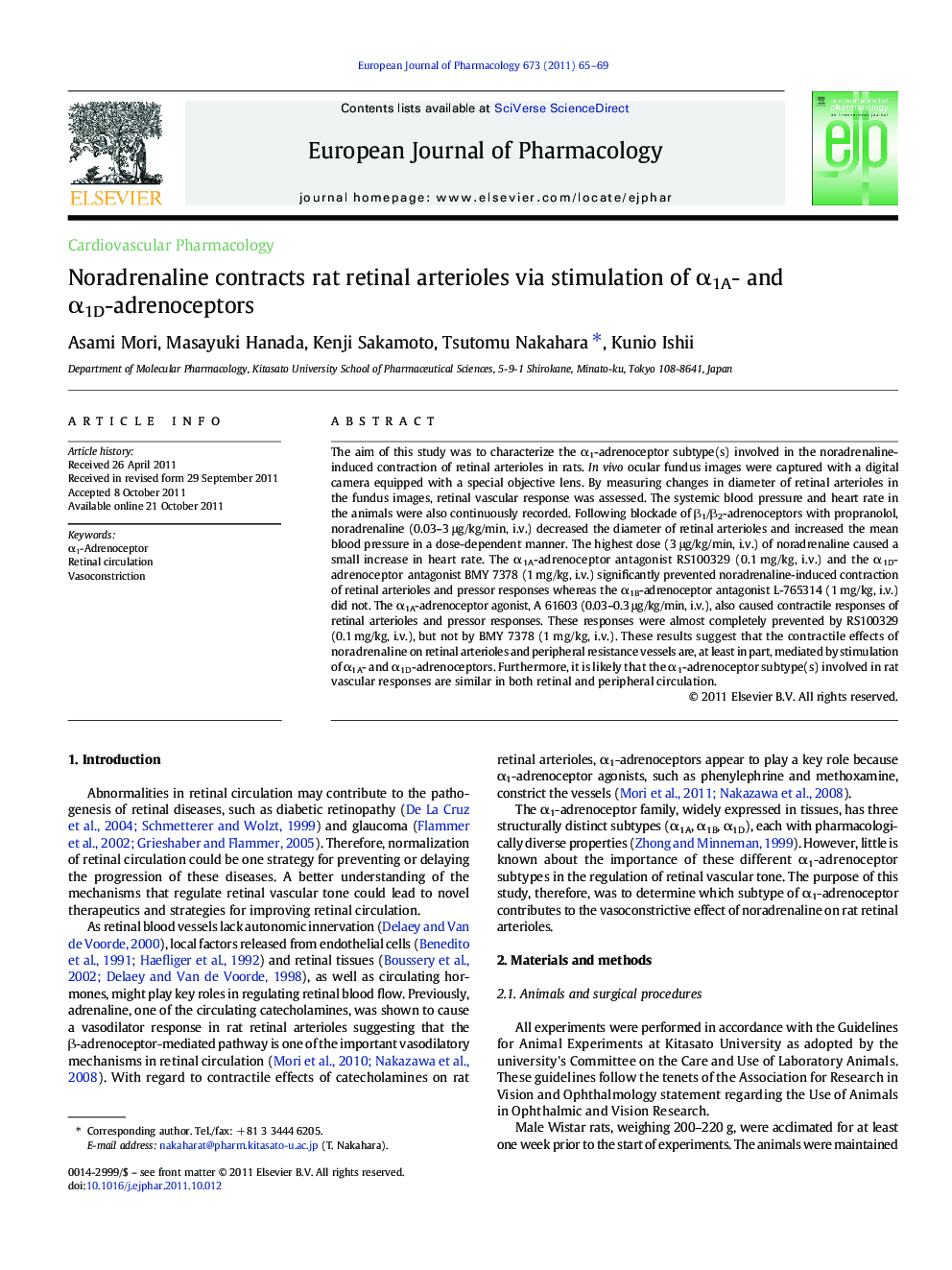| Article ID | Journal | Published Year | Pages | File Type |
|---|---|---|---|---|
| 2532477 | European Journal of Pharmacology | 2011 | 5 Pages |
The aim of this study was to characterize the α1-adrenoceptor subtype(s) involved in the noradrenaline-induced contraction of retinal arterioles in rats. In vivo ocular fundus images were captured with a digital camera equipped with a special objective lens. By measuring changes in diameter of retinal arterioles in the fundus images, retinal vascular response was assessed. The systemic blood pressure and heart rate in the animals were also continuously recorded. Following blockade of β1/β2-adrenoceptors with propranolol, noradrenaline (0.03–3 μg/kg/min, i.v.) decreased the diameter of retinal arterioles and increased the mean blood pressure in a dose-dependent manner. The highest dose (3 μg/kg/min, i.v.) of noradrenaline caused a small increase in heart rate. The α1A-adrenoceptor antagonist RS100329 (0.1 mg/kg, i.v.) and the α1D-adrenoceptor antagonist BMY 7378 (1 mg/kg, i.v.) significantly prevented noradrenaline-induced contraction of retinal arterioles and pressor responses whereas the α1B-adrenoceptor antagonist L-765314 (1 mg/kg, i.v.) did not. The α1A-adrenoceptor agonist, A 61603 (0.03–0.3 μg/kg/min, i.v.), also caused contractile responses of retinal arterioles and pressor responses. These responses were almost completely prevented by RS100329 (0.1 mg/kg, i.v.), but not by BMY 7378 (1 mg/kg, i.v.). These results suggest that the contractile effects of noradrenaline on retinal arterioles and peripheral resistance vessels are, at least in part, mediated by stimulation of α1A- and α1D-adrenoceptors. Furthermore, it is likely that the α1-adrenoceptor subtype(s) involved in rat vascular responses are similar in both retinal and peripheral circulation.
